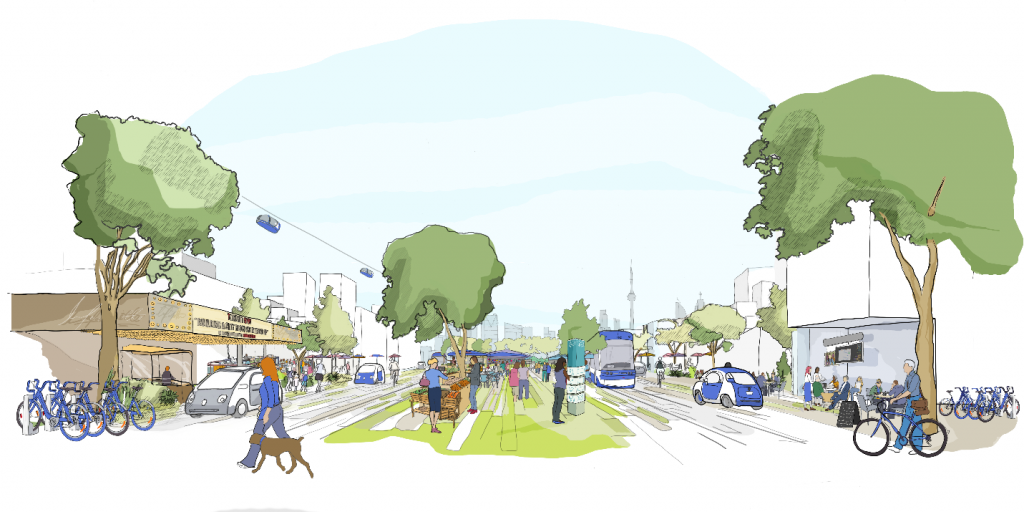Sidewalk Labs, the Alphabet spin-off that’s building a new smart city on Toronto’s Eastern Waterfront, has just announced that construction will begin in 2020. Given that this new neighborhood is meant to be a pilot project to influence the future of cities across the globe, it seems valid to wonder what Sidewalk Lab’s vision of mobility looks like. A recent “Sidewalk Talk” blog post provides insight through a Q & A with one of Sidewalk Lab’s transportation advisors, David Levinson.
Levinson’s viewpoint can be broken down into three key takeaways:
- Pricing will be the number one way to incentivize shared AVs over private AVs. Some of the options include congestion pricing, road pricing, or even creating a new type of traffic violation that fines empty cars for circling the block endlessly.
- Curbside management will be a key consideration for cities, but may be most easily managed through flexible uses at different times of day.
- Curbside management can be generalized as space reallocation. Fewer, smaller cars that move more efficiently can make room for new uses on the road including bike lanes, bus lanes, and drop-off zones.
The article offers insight into Sidewalk Lab’s vision of traffic enforcement as well, displaying a reliance on cameras and bots to capture and record unwanted behavior. While the official Toronto plans aren’t set to be released for at least another year, several articles have reported the plan includes a heavy use of cameras for data collection and monitoring. The use of cameras may make it easier for cities to collect mobility data rather than relying on data sharing from private companies, but it raises questions about privacy and data security.
This article, as well as Sidewalk Lab’s vision statement, seem to point towards a people-oriented mobility future. However, vision statements and hand-drawn streetscapes don’t always translate into the real world build environment. The world will have to wait until development is complete to see if Toronto’s Eastside Harbor really is a strong example for a sustainable, affordable city of the future.
Steph Nappa is a Master’s Candidate in Community and Regional Planning and an Urbanism Next Fellow at the University of Oregon. She is examining how to re-design city streets to prioritize bicycles, pedestrians and transit in an era of autonomous vehicles.


